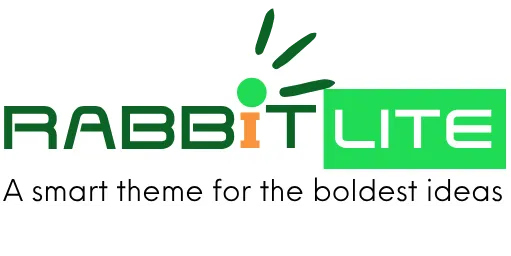- 1. Why Homepage Widget Heading Tag Matters for SEO
- 2. How to Adjust Widget Heading Tag in Rabbit Lite
- 3. Best Practices for Homepage Widget Heading Tags
- 4. Styling Widget Titles in Rabbit Lite
- 5. Common Mistakes to Avoid
- 6. Common Mistakes to Avoid
- 7. FAQ – Homepage Widget Heading Tag in Rabbit Lite
- 7.1. What is the default heading tag for widget titles in Rabbit Lite?
- 7.2. Can I set different heading tags for different widgets?
- 7.3. Does changing widget heading tags affect SEO?
- 7.4. How can I style widget headings without coding?
- 7.5. Do I need coding skills to manage widget heading tags in Rabbit Lite?
- 8. Conclusion – Improve Your Homepage with Rabbit Lite
Homepage widgets often display elements like recent posts or categories. They make your site more engaging and useful. Each of these widgets usually has a visible title on the homepage. That title plays an important role in structuring your content.
Every widget comes with a title that is more than decoration. It gives context to your visitors and helps organize your homepage. When used correctly, it becomes part of the content hierarchy. This is where the homepage widget heading tag matters the most.
The heading tag (H2, H3, etc.) is the HTML element applied to widget titles. It tells browsers and search engines how the title fits into the structure. Choosing the right heading tag ensures consistency and clarity across your homepage.
Using the correct homepage widget heading tag improves readability and user experience. It also supports search engine understanding of your site’s hierarchy. A well-structured heading tag setup makes your homepage easy to navigate and SEO-friendly.
Why Homepage Widget Heading Tag Matters for SEO
Using the right homepage widget heading tag is more than a design choice; it directly impacts SEO performance. By structuring widget titles correctly, you guide both search engines and users through your homepage content, improving clarity and accessibility while boosting your site’s overall visibility.
- Heading tags guide search engines to understand content hierarchy. When widget titles use H2 or H3, search engines can interpret the importance of each section, making crawling and indexing more effective. This structured approach boosts the homepage SEO impact.
- Widget titles marked with H2 or H3 improve clarity in page structure. They serve as sub-sections of your homepage, organizing categories or features neatly. Readers can quickly find what they need, while search engines follow a clear hierarchy of information.
- Correct heading usage supports better accessibility and navigation. Screen readers rely on heading tags to guide users through the content. A properly set homepage widget heading tag ensures all visitors, including those with disabilities, experience smooth navigation.
- Avoid multiple H1 tags, as they confuse search engines. The homepage should typically have one main H1 for the site title or primary section. Widget titles using lower-level tags maintain order, reducing SEO risks and keeping the site structure consistent and user-friendly.to understand content hierarchy.
How to Adjust Widget Heading Tag in Rabbit Lite
Adjusting the homepage widget heading tag in Rabbit Lite is straightforward and requires no technical background. This feature allows you to set consistent heading levels for all widget titles, making your homepage more organized, accessible, and search-engine friendly.
- Go to Rabbit Lite > Settings > Homepage > Homepage Widget Title Heading Tag. This is where you can control how your widget titles appear in the HTML structure of your homepage.
- Select your preferred heading tag (H2, H3, H4) from the dropdown list. Choosing the right level ensures each widget title aligns with your overall homepage hierarchy and SEO strategy.
- Save the changes and refresh your homepage to see the effect. The update applies instantly, giving you an immediate preview of how widget headings now look and function on your site.
- This process is simple, quick, and beginner-friendly. By setting a homepage widget heading tag, you balance design, usability, and SEO without touching any code or needing advanced WordPress skills.
Best Practices for Homepage Widget Heading Tags
Following best practices when setting the homepage widget heading tag ensures a balanced website structure. It helps create a logical hierarchy that improves both user experience and SEO performance, while keeping your design consistent across all sections of your homepage.
- Use H2 for main widget titles to stay consistent with your homepage hierarchy. H2 tags act as clear markers for key sections, making it easier for visitors and search engines to recognize important parts of your homepage layout.
- Choose H3 or H4 for less important widget sections. These tags provide flexibility while keeping the overall structure organized. By using smaller headings, you maintain visual balance and avoid overemphasizing less critical content.
- Keep heading choices consistent across your homepage. Consistency ensures that users have a predictable browsing experience. When every widget follows the same heading logic, navigation becomes simpler, and your homepage looks professional and reliable.
- Review your site’s heading structure using a browser inspection tool. This allows you to double-check the implementation of the homepage widget heading tag. It also helps identify mistakes, such as skipped levels or duplicate heading tags that could confuse readers.
- Ensure headings look good on both desktop and mobile devices. Test different screen sizes to verify readability and spacing. A well-selected homepage widget heading tag should remain clear and visually appealing across all devices, enhancing both design and usability.
Styling Widget Titles in Rabbit Lite
Styling your homepage widget heading tag in Rabbit Lite is easy thanks to built-in customization options. Adjusting design elements ensures widget titles are clear, visually appealing, and consistent with the overall theme style without adding unnecessary complexity.
- Open Appearance > Customize > Style to manage font size, color, or spacing. These settings let you personalize widget headings quickly while ensuring they remain legible and attractive.
- Keep widget titles clean, with legible fonts and balanced sizes. A neat design makes your homepage professional, improves readability, and strengthens the role of each homepage widget heading tag.
- Stick with minimal styling to match Rabbit Lite’s design approach. Minimalist elements highlight your content while ensuring widget titles remain consistent, elegant, and easy to navigate across your site.
- Avoid too many decorative effects, as they reduce clarity. Over-styling may distract visitors from the main content, so a simple homepage widget heading tag design is always more effective.
Common Mistakes to Avoid
When setting a homepage widget heading tag, some common mistakes can negatively affect SEO and design. Being aware of these errors helps you build a consistent, user-friendly homepage that supports both clarity and search performance.
- Using H1 for every widget title, which confuses search engines. The homepage should have one H1 only, while widget titles should use lower-level tags like H2 or H3.
- Mixing heading tags inconsistently, such as H2 for one widget and H5 for another. This inconsistency disrupts hierarchy and makes navigation harder for both users and search engines.
- Applying too many styles, making widget titles distracting. Instead of focusing on content, users may get lost in unnecessary visuals. Keep the homepage widget heading tag clean and simple.
- Forgetting to preview changes on mobile devices. Widget headings that look good on desktop may break or appear cluttered on small screens, so always test responsiveness.
- Ignoring SEO structure when adjusting headings. Skipped levels or excessive variation can reduce your site’s search ranking. Consistency in homepage widget heading tag use improves both SEO and user experience.
Common Mistakes to Avoid
This section lists mistakes users often make when dealing with widget heading tags and how to prevent them.
- Using H1 for every widget title, which confuses search engines.
- Mixing heading tags inconsistently, such as H2 for one widget and H5 for another.
- Applying too many styles, making widget titles distracting.
- Forgetting to preview changes on mobile devices.
- Ignoring SEO structure when adjusting headings.
FAQ – Homepage Widget Heading Tag in Rabbit Lite
This FAQ section answers common questions about widget title customization in Rabbit Lite Theme.
What is the default heading tag for widget titles in Rabbit Lite?
By default, Rabbit Lite assigns widget titles with a consistent heading tag, usually H3. You can change this setting in Rabbit Lite > Settings > Homepage > Homepage Widget Title Heading Tag.
Can I set different heading tags for different widgets?
Rabbit Lite applies the same heading tag across all homepage widgets. This ensures consistency. If you want variation, adjust your design so the tag choice still fits a logical hierarchy.
Does changing widget heading tags affect SEO?
Yes. Properly using H2 or H3 improves the structure of your homepage, making it easier for search engines to crawl. While the impact is not huge, it helps with clarity and user experience.
How can I style widget headings without coding?
You can easily style widget titles in Appearance > Customize > Style. Here you can set font size, color, and spacing while keeping the overall design consistent with Rabbit Lite.
Do I need coding skills to manage widget heading tags in Rabbit Lite?
No coding skills are required. Rabbit Lite provides simple settings for widget heading tags. Beginners can change them easily with just a few clicks in the theme panel.
Conclusion – Improve Your Homepage with Rabbit Lite
This section wraps up the guide and encourages readers to explore Rabbit Lite’s customization.
With Rabbit Lite, adjusting homepage widget heading tags is simple and effective. You can choose the right headings, keep your design consistent, and support SEO—all without coding. Try Rabbit Lite, the free WordPress theme that makes customization easy, SEO-friendly, and user-focused.




